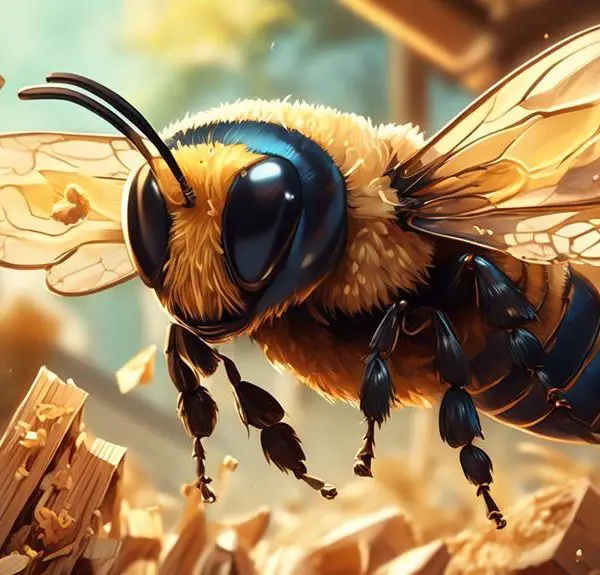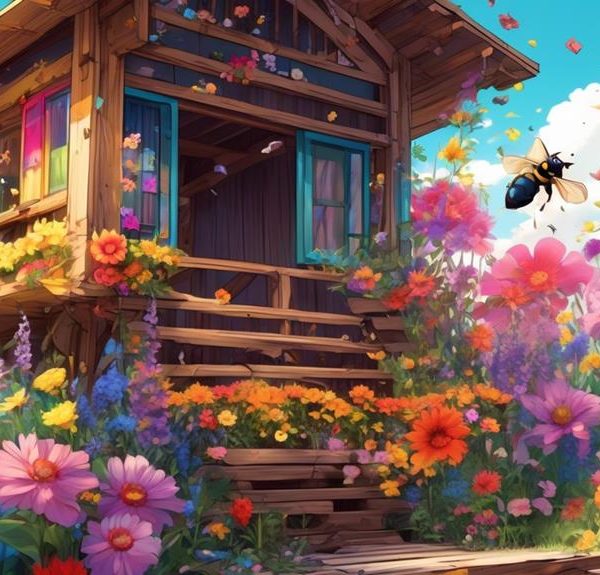Take a deeper dive into the world of carpenter bees, unravelling the size and intricacies of the holes they masterfully craft into wood.
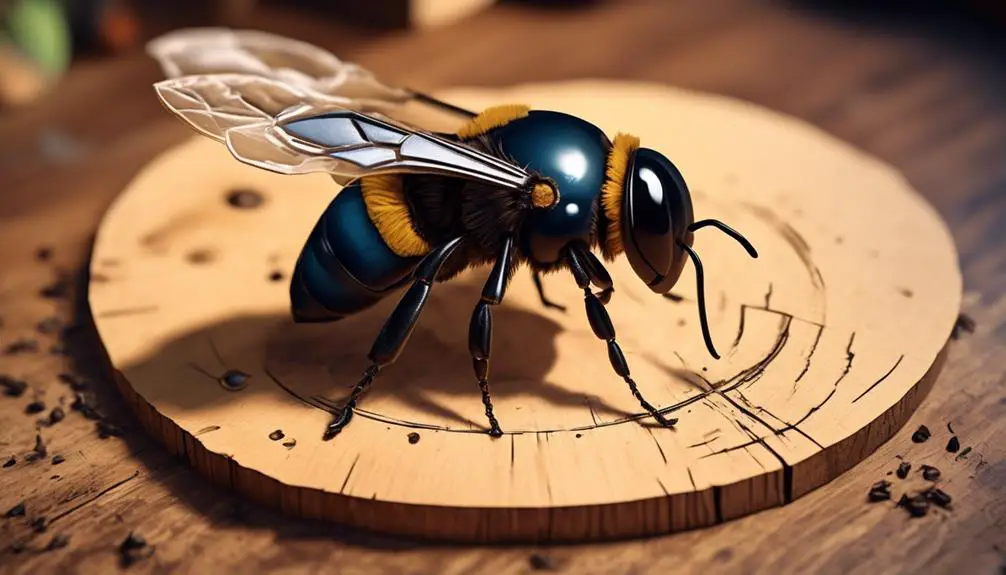
What Size Hole Does a Carpenter Bee Make
In the vast world of woodworking, you'd be forgiven for thinking that the most impressive carpenter is a human wielding a hammer and chisel. Yet, nature holds its own master craftsmen: carpenter bees. These industrious insects are capable of drilling holes nearly half an inch in diameter into wood – an achievement that would make any seasoned carpenter green with envy.
But what if I told you there's more to this story? A bigger picture that could change your perspective on these tiny yet formidable woodworkers. Hold onto your seat, because we are about to explore the fascinating intricacies of the carpenter bee's handiwork.
Key Takeaways
- Carpenter bees create holes that are typically half an inch in diameter.
- The size of the holes is designed to allow the bees to enter and exit while deterring larger predators.
- The half-inch diameter optimizes heat retention within the nest.
- Carpenter bees have strong mandibles capable of excavating tunnels into tough wood.
Understanding Carpenter Bees
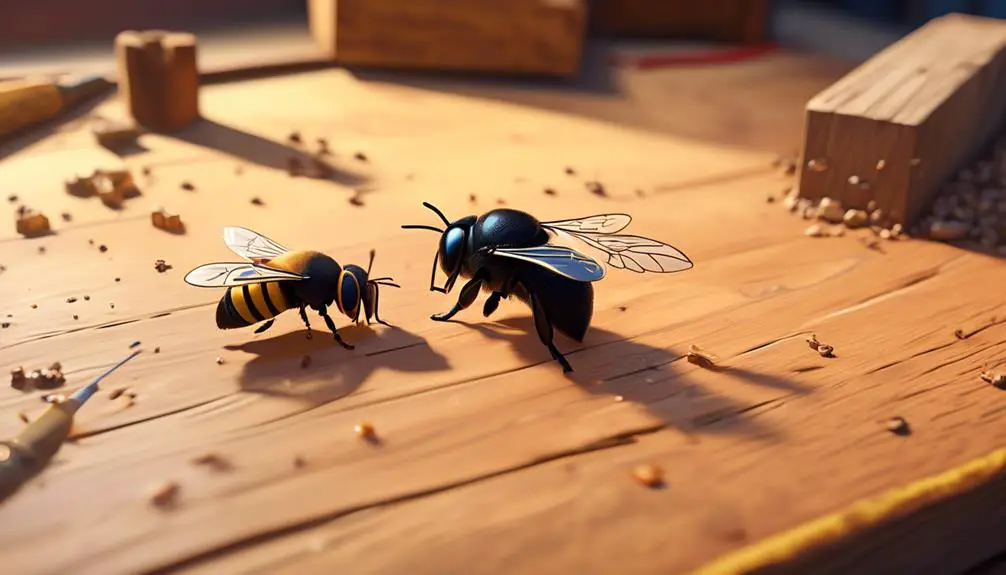
To fully grasp the unique behavior of carpenter bees, you need to delve into their fascinating biology, lifecycle, and the specific traits that set them apart from other bee species.
Unlike honeybees, who live in large colonies, carpenter bees are solitary creatures. Females bore holes into wood, creating tunnels where they lay their eggs and store pollen for their offspring. This tunneling behavior, which can damage wooden structures, is a defining characteristic of carpenter bees.
Their lifecycle is equally intriguing. After mating in spring, females lay eggs in individual cells within the tunnel, each with a pollen ball for the emerging larva to feed on. The eggs hatch in late summer, and the new adults remain in the tunnels over winter, emerging in spring to repeat the cycle.
Analyzing their unique traits, you'll notice that only female carpenter bees are capable of stinging, while males, despite their aggressive behavior, are harmless. Furthermore, they exhibit sexual dimorphism, with females being black and males having a yellow face.
Understanding these biological intricacies helps you appreciate why carpenter bees behave the way they do, including their remarkable ability to carve out their homes in wood.
Carpenter Bee's Nesting Habits
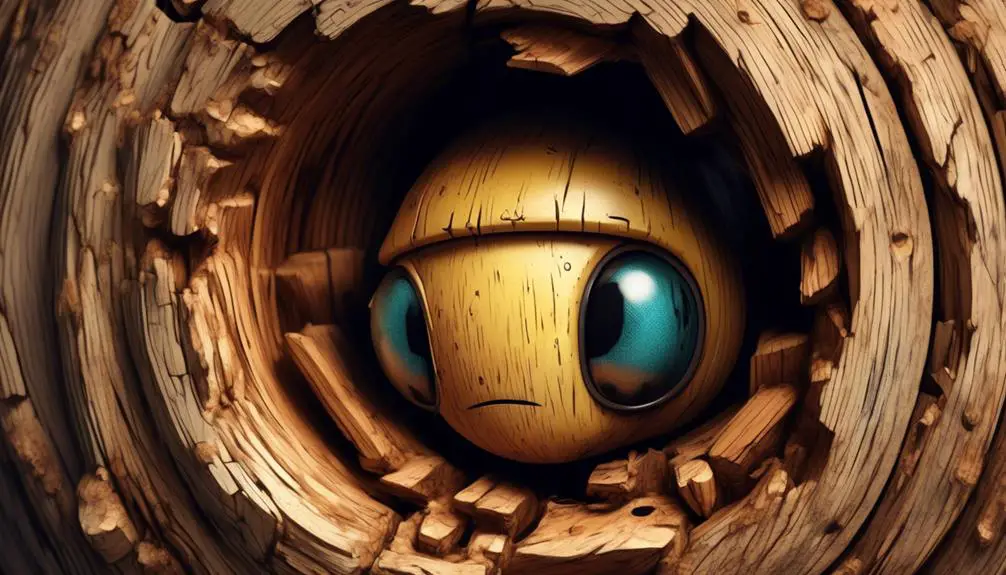
Building on their unique biology and behavior, let's now examine the carpenter bees' nesting habits, particularly their remarkable ability to bore into wood and establish their breeding grounds. Contrary to popular belief, carpenter bees don't eat wood. Instead, they excavate it to build nests.
Adult female carpenter bees begin by drilling a near-perfect circular hole, about half an inch in diameter, into the wood. They then turn 90 degrees and construct a tunnel, or gallery, that can extend up to 10 inches. This is a meticulous process, taking several weeks to complete.
Within this tunnel, they fashion brood cells. Each cell is provisioned with a ball of pollen and nectar, onto which an egg is laid. The female then seals the cell with chewed wood pulp, creating a protective nursery for her offspring. This process continues until multiple cells are laid end-to-end within the tunnel.
In a fascinating display of reuse, carpenter bees will often refurbish old tunnels for new nests, rather than always starting from scratch. As you can see, these bees are more than just wood-boring pests. They're skilled architects, demonstrating a complex and efficient approach to nesting.
The Size of Carpenter Bee Holes
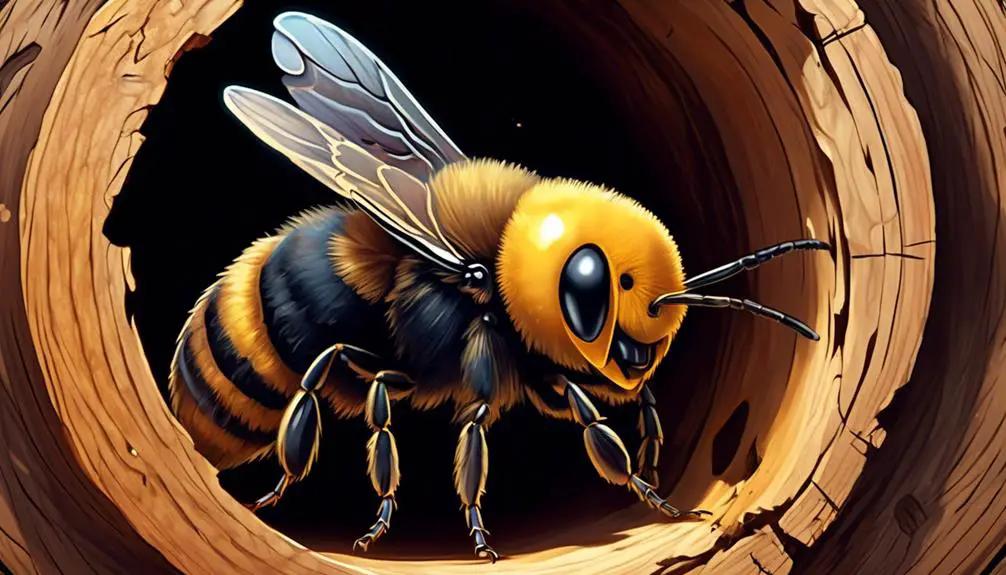
While observing a carpenter bee's nesting habits, you'll likely notice the near-perfect circular holes they bore into wood, which typically measure about half an inch in diameter. These holes, precisely cut, are the entry points into the bee's nest.
The size of these holes isn't a random occurrence; it's a meticulously calculated decision made by the bee. The half-inch diameter is large enough to allow the bee to enter and exit, yet small enough to deter larger predators. This size also optimizes heat retention within the nest, critical for brood development.
Carpenter bees possess strong mandibles, capable of excavating tunnels into the toughest wood. The tunnels, extending several feet, serve as the bee's living quarters and breeding grounds.
It's essential to note that the bee doesn't eat the wood. Instead, it discards the chewed wood particles, commonly referred to as frass.
Identifying Carpenter Bee Damage
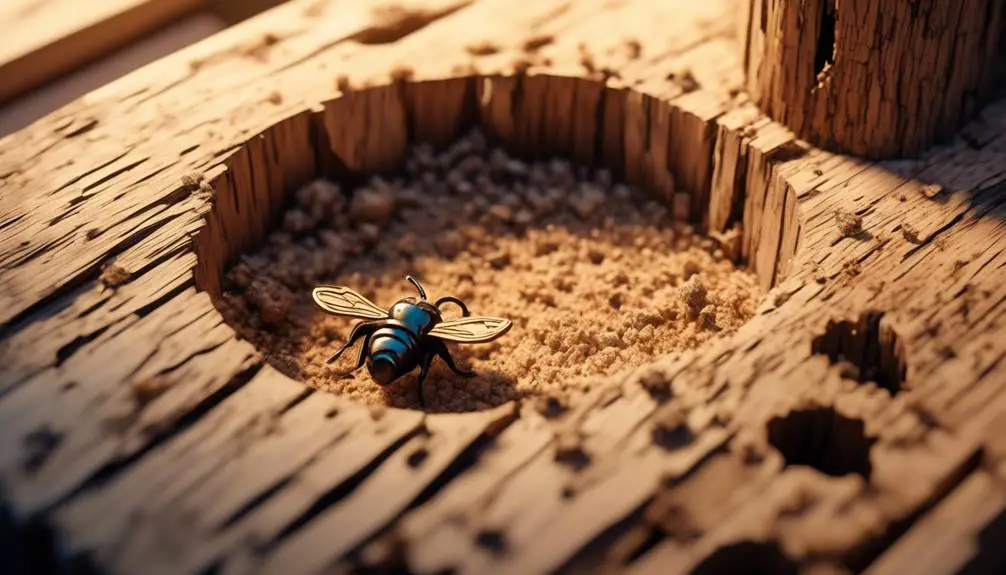
Having understood the size and nature of carpenter bee holes, you might now be wondering how to identify the damage they cause to your wooden structures. This damage is distinctive, but requires a careful, analytical eye to spot.
The primary sign of carpenter bee damage is, of course, the presence of round, smooth holes about a half-inch in diameter. However, there are other signs that can aid in identification. For instance, you might notice a coarse, sawdust-like substance, known as frass, near the hole. This is debris from the bee's drilling.
Another indicator is the staining around the hole, caused by the bee's waste. You may also notice a faint buzzing sound or see adult bees hovering nearby.
To help you identify carpenter bee damage, refer to the table below:
Sign | Description |
|---|---|
Hole | Round, smooth, about half an inch in diameter |
Frass | Sawdust-like substance near the hole |
Staining | Around the hole, caused by bee's waste |
Sound | Faint buzzing from within the structure |
Sight | Adult bees hovering near the structure |
Prevention and Control Strategies
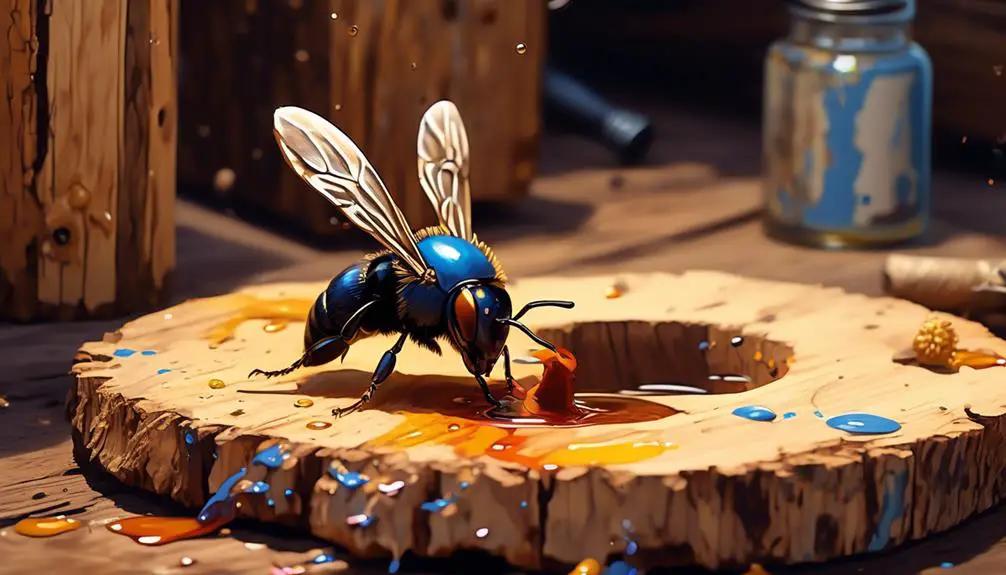
In order to safeguard your wooden structures from the destructive habits of carpenter bees, there are effective prevention and control strategies you can implement.
The first preventive measure you should consider is the application of certain wood finishes. Carpenter bees typically avoid painted or varnished wood. Research suggests they're less likely to burrow into hardwoods, so using these in exposed areas may deter them.
In terms of control, insecticidal dusts like boric acid have proven highly effective. Inject the dust into the bee's entrance hole, ensuring it coats the tunnel. The bees inadvertently come into contact with the dust as they enter or exit, leading to their subsequent eradication.
Another strategy is the use of traps. Carpenter bee traps, designed to mimic their preferred nesting sites, lure in these bees, trapping them inside without the use of harmful chemicals.
Lastly, professional pest control services can provide a comprehensive solution if an infestation is already present. They're equipped with the necessary tools and expertise to manage the problem and prevent future occurrences.
Conclusion
In conclusion, you've learned that carpenter bees leave distinctive 1/2 inch holes in their wake, a clear sign of their nesting habits. Identifying these holes promptly can help mitigate damage.
Remember, prevention strategies such as treating wood or using bee-resistant materials can be highly effective. Stay vigilant to protect your wooden structures from these industrious insects.
Knowledge is your best tool in the fight against carpenter bee damage.

